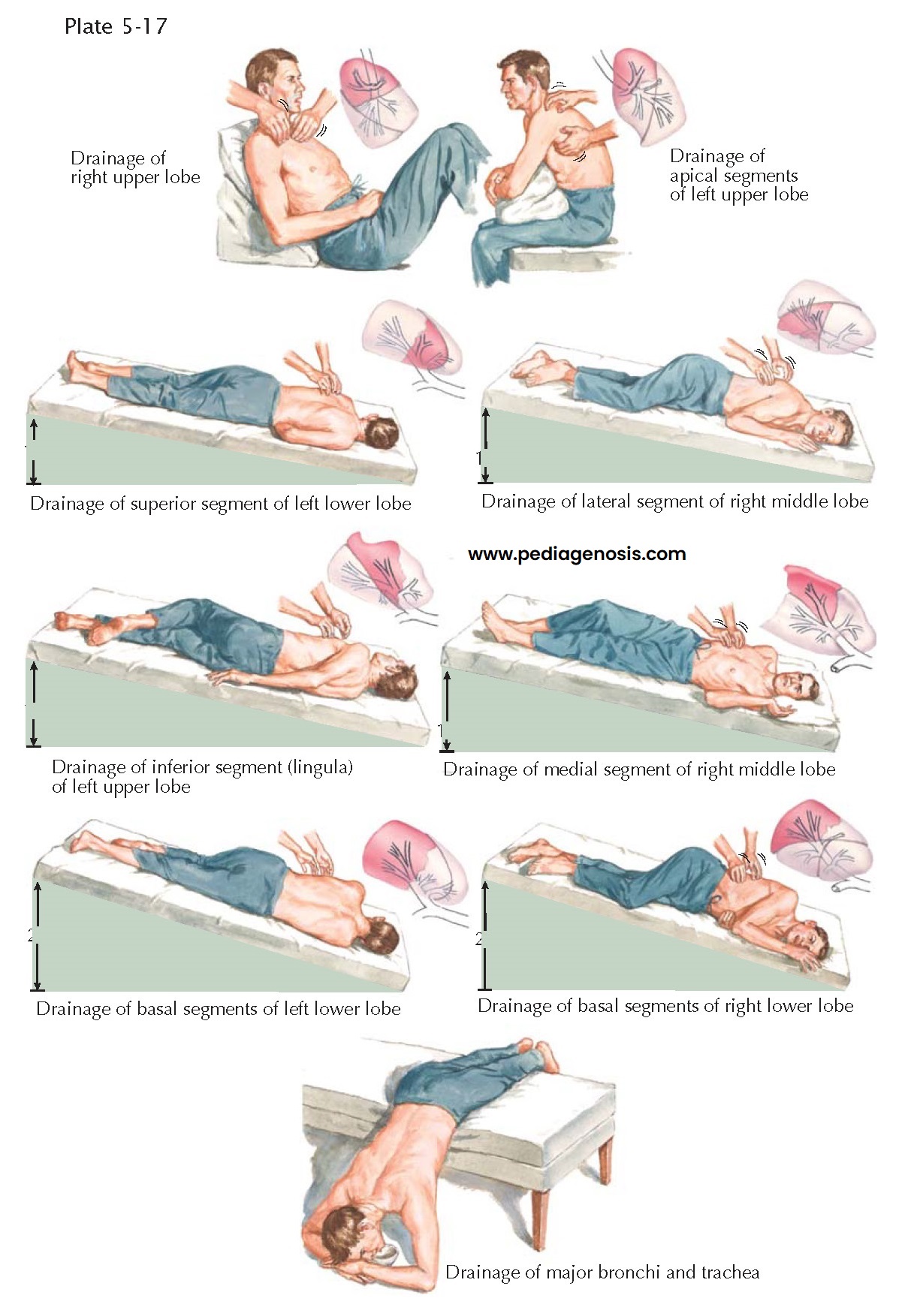POSTURAL DRAINAGE AND BREATHING EXERCISES
The accumulation of excess bronchial secretions is a major complicating factor in patients with chronic obstructive pulmonary disease, cystic fibrosis, or bronchiectasis and is particularly critical when the disease has advanced so far that both the cough mechanism and bronchociliary action are greatly impaired. The accumulated mucoid or mucopurulent secretions constitute a permanent source for the reactivation of bacterial infection. In addition, they can interrupt airflow and cause temporary or permanent airway obstruction.
Postural drainage, also called gravitational
drainage, is the preferred and best-tolerated means for clearing the
bronchial tree. Other techniques, such as suctioning or bronchial washing,
cause considerable discomfort, often requiring local anesthetic and specialized
paramedical personnel. Postural drainage can be practiced effectively in the
patient’s home with the assistance of a family member. Indeed, the fact that
the patient is able to participate actively in his or her own therapy, rather
than being merely a passive recipient, is also of value.
Adequate hydration is also important in facilitating
drainage. Drainage is then accomplished by means of the following manual or
electrically operated maneuvers to dislodge and help propel the trapped
secretions toward the trachea: (1) percussion with rapid vibration tap, (2)
tapping with cupped hands, and (3) high-frequency ultrasonography. These
techniques are applied where drainage is most necessary, over either the
anterior or the posterior chest wall, and are repeated during the time each
position or posture is held by the patient.
Proper positioning of the patient, which is paramount,
is done according to the distribution and configuration of the bronchopulmonary
segments. To achieve maximal drainage of the apical segments of the upper lobe,
for example, a slightly reclining upright position is the most effective. For
drainage of the trachea and major bronchi, the right-angled head-down position
should be assumed. The head-down (Trendelenburg) position should be used in
draining the middle and lower pulmonary lobes.
Most patients tolerate these positions well, the
exception being that the debilitated patient may initially experience difficulty
in a achieving the right-angled head-down position. In such cases, this
position should be attained very gradually and only to the degree of the
individual’s tolerance.
Postural drainage should be practiced at least twice a
day. Each position should be held for 3 to 5 minutes. If at all possible, a
family member should accompany the patient during the initial training for optimal
preparation for assisting in home treatment.
The more recently developed high-frequency chest oscillation vest applies high-frequency vibrations throughout the chest wall. Patients typically wear the vest for 20 minutes twice a day. Vibrations can also be applied to the airways by breathing out through a small, handheld device that causes airway flutter. This may also facilitate removal of secretions. Autogenic drainage is another technique whereby patients breathe and “huff” cough at progressively larger lung volumes to facilitate movement of secretions from the smaller to the larger airways, where they can be more easily expectorated.





